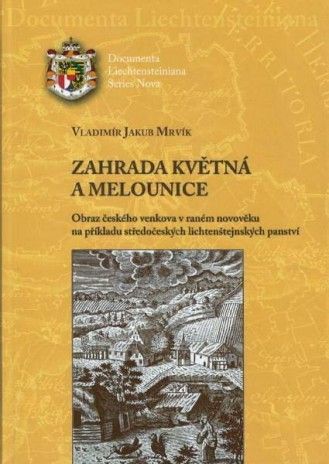MRVÍK, Vladimír Jakub. Zahrada květná a melounice: obraz českého venkova v raném novověku na příkladu středočeských lichtenštejnských panství. Ostrava: Ostravská univerzita v Ostravě, 2016. 447 pp. ISBN 9788074648373.
The book presents the everyday life of subjects in the Český Brod and Černokostelecký regions during the period following the Thirty Years' War, placing it within a broader historical context. Through extensive encyclopedic entries, it documents the life of twenty rural localities belonging to the former Kostelec nad Černými Lesy estate. The core information is drawn primarily from the so-called Golden Urbar dating from 1672 to 1677—an important and highly valued source among historians that, until now, has not been published even partially in print. In addition, data from the labor force register or population register for the relevant year is available for each village. The final annotated section of many entries includes excerpts from the land registers from the late 18th century, when officials meticulously described the appearance of every serf’s cottage, including the interior household equipment. The book further features numerous contemporary illustrative materials. In recent years, the study of the early modern countryside has attracted growing interest among historians, who have increasingly focused on so-called “microhistory.” Their attention centers on the individual—his or her personal feelings, behavior, thoughts, and both professional and private strategies. This study also incorporates a wealth of architectural and technical details concerning the construction methods and execution of various manorial enterprises (such as taverns, smithies, sawmills, mills, etc.), alongside typical rural homesteads of the early modern era. Linguists will undoubtedly appreciate this publication as well, since the Golden Urbar is a voluminous document showcasing the richness of the Czech Baroque. It includes many picturesque words that are corruptions derived from (Early New High) German.

